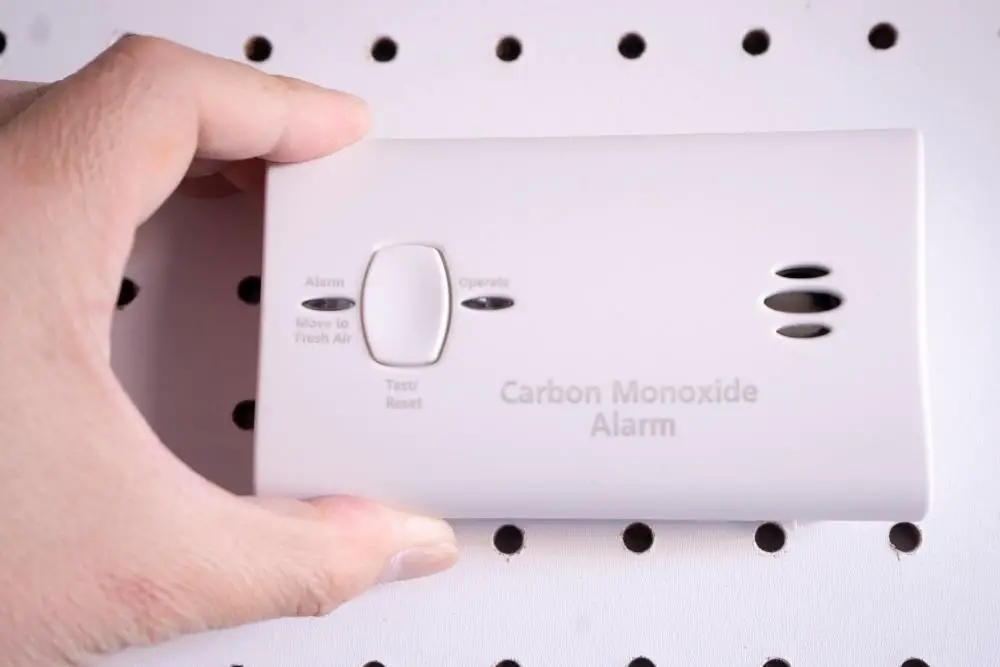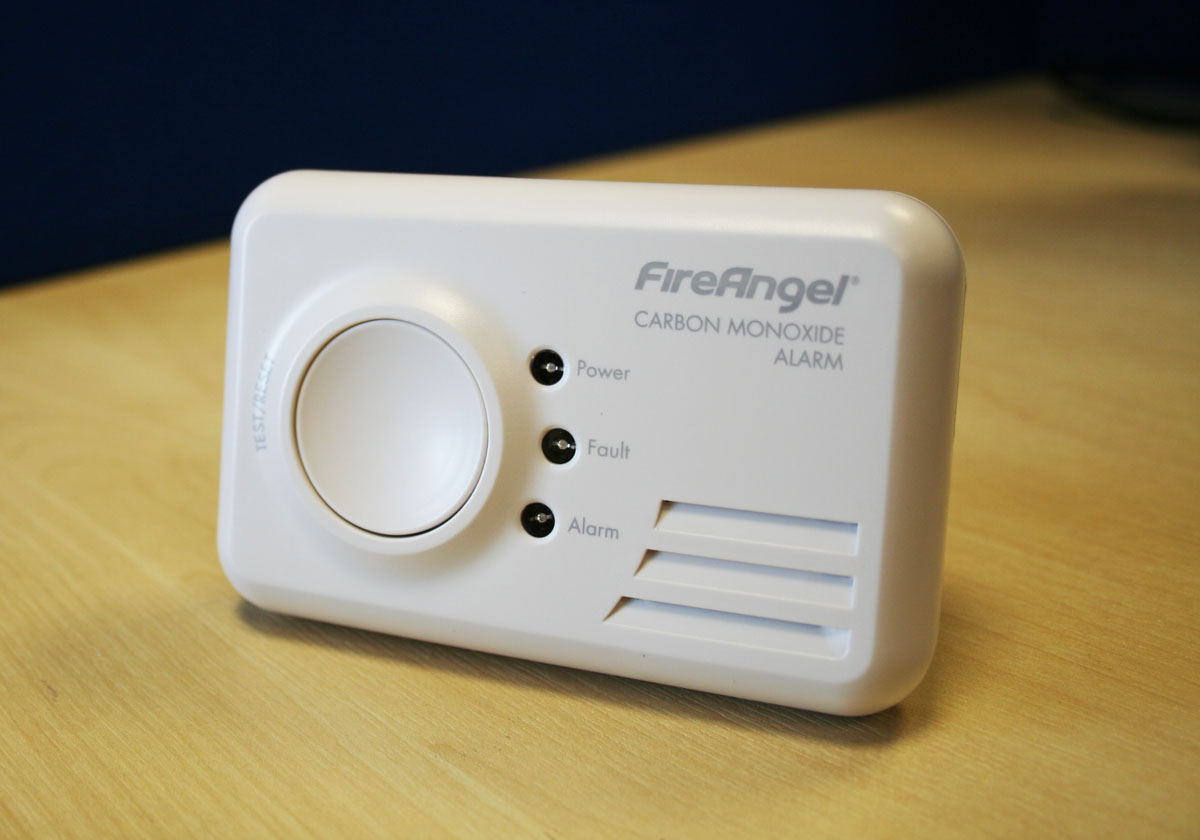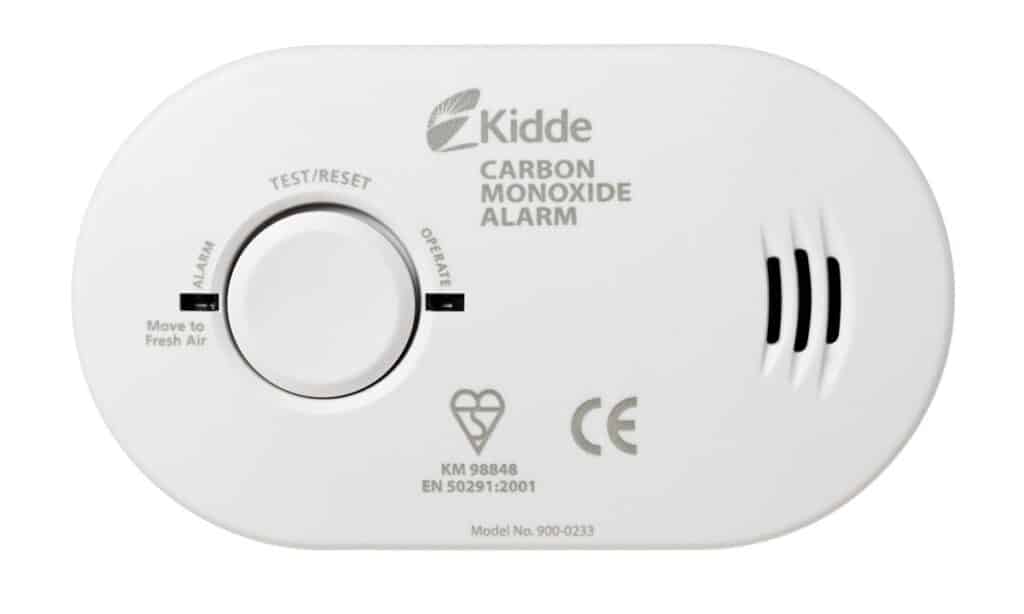Carbon Monoxide Detector Alarm Going Off

It's the middle of the night. A piercing shriek cuts through the darkness – your carbon monoxide (CO) detector is screaming. Panic sets in, but before you completely lose it, let's take a deep breath and systematically figure out what's going on. CO alarms going off can be frightening, but understanding the possible causes and knowing how to react can make all the difference.
One of the most frequent heating and cooling problems homeowners encounter, especially during colder months, is incomplete combustion in fuel-burning appliances. This means that instead of burning cleanly and producing primarily carbon dioxide (CO2), these appliances release dangerous levels of carbon monoxide (CO) into the air. CO is odorless, colorless, and deadly, making a working CO detector your first line of defense.
Diagnosing the Issue: A Step-by-Step Approach
When your CO alarm goes off, don't immediately assume the worst. Follow these steps to safely and effectively troubleshoot the situation:
Step 1: Evacuate Immediately
Your safety is paramount. If the alarm is sounding, get everyone out of the house immediately. Don't waste time gathering belongings. Get to fresh air, away from the building, and stay there. Call 911 or your local fire department from a safe location.
Do Not:
- Ignore the alarm. Treat every CO alarm as a potential emergency.
- Open windows before evacuating. Your priority is to get everyone out, not to ventilate the house before ensuring everyone is safe.
- Go back inside for any reason until the all-clear is given by qualified professionals.
Step 2: Contact Emergency Services
Once you're safely outside, call 911 or your local fire department. They have specialized equipment to detect CO levels and identify the source of the leak. Do not re-enter the house until they give you permission. These professionals will:
- Measure the CO levels in your home.
- Identify potential sources of the leak.
- Ventilate the house to remove the CO.
- Advise you on the next steps.
Step 3: After the All-Clear – Investigate Potential Sources
Only after emergency services have cleared your home and declared it safe can you begin investigating the potential cause of the alarm. Here's where you can start, remembering to never operate a malfunctioning appliance:
Checking without Tools:
- Inspect Furnace Vents: Visually check the furnace flue (the pipe that carries exhaust gases outside) for any obvious signs of damage, rust, or blockage. Look for disconnected sections or debris buildup.
- Check Fireplace Dampers: Ensure the fireplace damper is fully open before lighting a fire. A closed or partially closed damper can force CO back into your home.
- Oven and Stove Inspection: Examine the burners on your gas stove and oven. Are the flames burning blue? A yellow or orange flame can indicate incomplete combustion. Look for excessive soot or black residue around the burners.
- Portable Heaters: If you use portable heaters (kerosene, propane, or natural gas), ensure they are properly vented and maintained. Check for fuel leaks or unusual odors.
- Appliance Surroundings: Look for obstructions around any fuel-burning appliance, such as stored boxes, clothes, or other flammable materials. Adequate airflow is crucial for proper combustion.
- Check CO Detector Placement & Age: Confirm your CO detectors are correctly placed (typically on each level of your home and near sleeping areas) and that they haven't expired. Most CO detectors have a lifespan of 5-7 years. Check the manufacture date on the device.
- Battery Check: Even hardwired CO detectors often have battery backups. Ensure the battery is fresh and properly installed. A low battery can sometimes cause false alarms or intermittent chirping that can be mistaken for a CO alarm.
Checking with Basic Equipment (Use with Caution! If unsure, call a professional):
- Combustion Flame Observation (Stove/Oven): A healthy gas flame should be primarily blue with a crisp, distinct shape. A lazy, flickering, yellow or orange flame is a strong indicator of incomplete combustion and requires immediate attention. *You will need to light the appliance to observe the flame, only do so if you feel comfortable and the area is well-ventilated.*
Step 4: Simple DIY Actions (Only After Emergency Services Approval!)
After emergency services have cleared your home and you've identified a potential minor issue, you might be able to take some simple DIY actions. However, always err on the side of caution and call a qualified HVAC professional if you are at all unsure.
- Replace CO Detector Batteries: If you suspect a low battery caused the alarm, replace it with a new one. Test the detector to ensure it's working properly.
- Clear Obstructions: Remove any obstructions blocking vents or airflow around appliances.
- Ensure Proper Ventilation: Open windows and doors (after the all-clear from emergency services) to ventilate the house and remove any residual CO.
- Clean Burners (Stove/Oven): Carefully clean the burners on your gas stove and oven to remove any debris or buildup that might be interfering with proper combustion. Consult your appliance's manual for specific cleaning instructions. Ensure the appliance is completely cool and disconnected from the gas supply before cleaning.
When to Call a Professional HVAC Technician
Certain situations require the expertise of a qualified HVAC technician. Do not attempt repairs or adjustments yourself if any of the following apply:
- You suspect a furnace malfunction: Furnaces are complex appliances, and any problems with the burner, heat exchanger, or venting system require professional diagnosis and repair.
- You detect a gas leak: If you smell gas (a rotten egg odor), evacuate immediately and call your gas company or 911. Do not attempt to locate or repair the leak yourself.
- The CO alarm keeps going off: If the alarm continues to sound even after you've taken the above steps, there is likely a persistent CO leak that requires professional attention.
- You lack experience or confidence: Working with gas appliances or electrical systems can be dangerous. If you are unsure about any aspect of the troubleshooting process, call a professional.
- The problem is beyond a simple fix: Any issues involving the internal components of your furnace, water heater, or other gas appliances require specialized knowledge and tools.
Specifically, call an HVAC professional to inspect:
- Your Furnace: Cracks, rust, or corrosion on the heat exchanger can leak CO. A technician can perform a combustion analysis to check for proper operation.
- Your Chimney: Blockages from bird nests, debris, or collapsed liners can prevent proper venting.
- Gas Lines: Leaks in gas lines are extremely dangerous and require immediate professional attention.
- Water Heater: Similar to furnaces, water heaters can also produce CO if they are not functioning correctly.
Preventive Measures for Carbon Monoxide Safety
The best way to protect your family from CO poisoning is to take preventive measures:
- Install CO Detectors: Install CO detectors on every level of your home, especially near sleeping areas. Follow the manufacturer's instructions for placement and maintenance.
- Test CO Detectors Regularly: Test your CO detectors at least once a month to ensure they are working properly.
- Replace CO Detectors: Replace CO detectors every 5-7 years, or as recommended by the manufacturer.
- Schedule Annual HVAC Maintenance: Have your furnace, water heater, and other gas appliances inspected and serviced annually by a qualified HVAC technician.
- Never Use Gas Appliances Improperly: Never use gas ovens or stoves for heating your home.
- Ensure Proper Ventilation: Never operate gasoline-powered engines (e.g., generators, lawnmowers) in enclosed spaces, such as garages or basements.
- Be Aware of Symptoms: Familiarize yourself with the symptoms of CO poisoning, which include headache, dizziness, weakness, nausea, vomiting, chest pain, and confusion. If you suspect CO poisoning, get to fresh air immediately and seek medical attention.
A CO alarm going off is a serious event that demands immediate attention. By following these steps, you can safely assess the situation, take appropriate action, and protect your family from the dangers of carbon monoxide. Remember, when in doubt, always call a qualified professional. Your safety is the most important thing.










